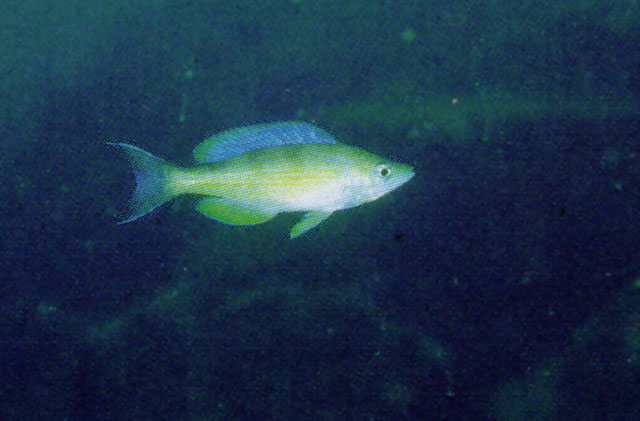| Cichlidae (Cichlids), subfamily: Pseudocrenilabrinae |
| 8.6 cm SL (male/unsexed); 8.12 cm SL (female) |
|
demersal; freshwater; depth range 9 - 30 m, |
| Africa: endemic to Lake Tanganyika, known from the Zambian coastline (Ref. 46826, 46829, 50901). |
|
Dorsal spines (total): 13-15; Dorsal soft rays (total): 14-16; Anal spines: 3-3; Anal soft rays: 11-13; Vertebrae: 36-38. Characterized by 3-4 distinct vertical bands on the body, which are absent or very indistinct in the other Cyprichromis species. Color: males with a yellowish body, bluish or slightly darkly tinted dorsally, 3-4 broad vertical bands on dorsal half of body beneath dorsal fin base, anteriormost one less distinct than the others, several yellow lines along longitudinal scale rows on ventral half of body, dorsal fin bluish, anal fin yellowish with blue tint, pelvic fin dark gray with yellow tip, caudal fin dark gray with bluish posterior and dorsal and ventral margins; females indistinct vertical bands on body, dull fin coloration and no yellow tip on pelvic fin (Ref. 46826). |
| Found 1-5 m above rocky bottoms; forms schools consisting of females and sub-adult males (often joining other schools of related species); mature males keeping a territory above a large rock or boulder in areas 15-25 m depth; mouthbrooder (Ref. 46826). |
|
Not Evaluated (N.E.) Ref. (130435)
|
| harmless |
Source and more info: www.fishbase.org. For personal, classroom, and other internal use only. Not for publication.

